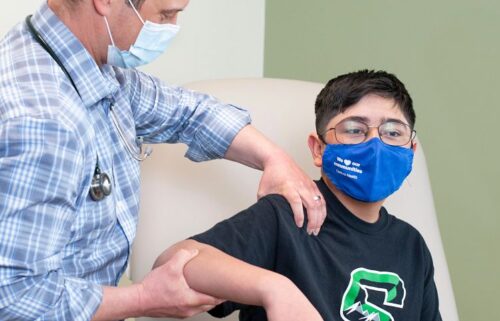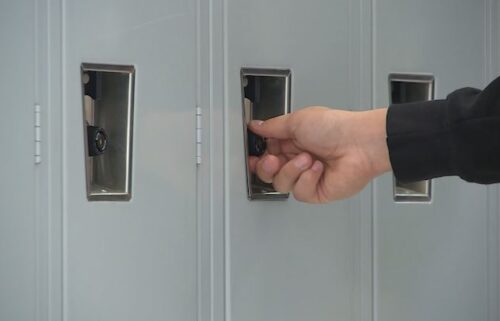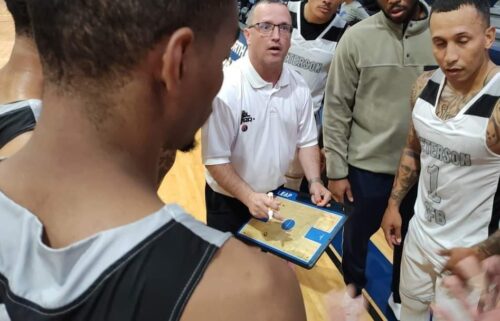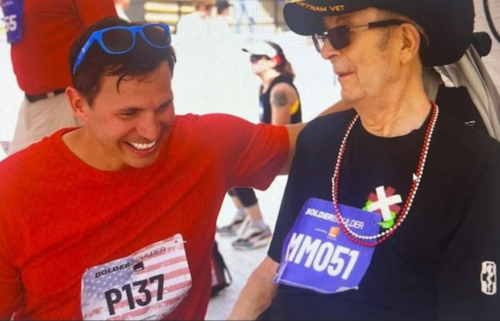66 million-year-old fossils puts spotlight on Colorado Springs
After scientists from Denver discovered 66-million-year-old fossils in Corral Bluffs, city leaders say the research and unprecedented find is giving Colorado Springs worldwide attention.
Back in 2016, paleontologist Tyler Lyson and paleobotanist Ian Miller struck scientific gold when they cracked open a concretion – a hard compact mass that forms when sediment accumulates over an organic nucleus like bones or plants.
“I split open a concretion and saw a mammal skull smiling back at me,” Lyson said.
The discovery led a team of scientists and volunteers to crack open more concretions which revealed fossils dating back to 66 million years ago. Scientists say the fossils reveal what life looked like up to one million years after a meteorite impacted Earth and caused a massive extinction.
PBS will be premiering an hour-long documentary on the fossil and the scientists’ findings on October 30. If you would like to visit the site in Corral Bluffs, you must schedule a guided tour at https://www.corralbluffs.org
Matt Mayberry, the cultural service director for Colorado Springs, said the discovery will likely garner attention from both tourists and scientists around the globe.
We interviewed Mayberry to learn more on the archeological site and how the discoveries will affect Colorado Springs.
KRDO: What’s the history of paleontological research at Corral Bluffs?
MAYBERRY: Paleontologists have had an interest in that area since at least the 1930s. So coming up to almost a century. They’ve been coming to this area and trying to figure out what the landscape can tell them about Earth’s history.
We have been working closely with the Denver Museum of Nature and Science for almost 30 years as they’ve been exploring the region. The discovery that led to what was announced recently really goes back to 2016. There’s a long history of using our open space to help document the recovery of the mammals after the asteroid ended the age of the dinosaurs.
KRDO: What’s your understanding of these fossil discoveries?
MAYBERRY: So these concretions contain the fossilized remnants of animal life, both reptilian and mammals. It helps scientists document a crucial period – a one-million-year period – after the end of the dinosaur age and the beginning of what ultimately became the modern era. If there is one million year period in the Earth’s history that’s still shrouded, it was this million years. Scientists tell me it’s really going to change the way we think about the beginning of the world today.
KRDO: What does this mean for Colorado Springs?
MAYBERRY: The CEO of the Denver Museum of Nature and Science said that this discovery may well make Colorado Springs a center for paleontological research all across the world. Our job as managers of the property of Corral Bluffs Open Space is to make sure we are treating the land responsibly. We’re caring for these incredible resources that are on the city’s open space and making sure that we can continue to document what’s there. We can work with scientists and others – anthropologists, archeologists – to know just what we have at this really incredible site.
It’s a big responsibility. We only have one chance really to get it right. And so working with these specialists will give us an understanding of how we can responsibly care for this land and protect those really amazing resources.
KRDO: What’s it like to practically have these fossils in your backyard?
MAYBERRY: Well I’m kind of a science geek. It’s really amazing. It’s exciting to begin to see the long work that they’ve done out there being publicized. We look forward to working with the scientists as they continue their exploration and their science.
KRDO: Can people go out there to see these fossils for themselves?
MAYBERRY: The site is not currently open to the public. You can take guided hikes out there. We do ask residents and visitors to respect that because we are still in the process of studying the land and making sure we know just what we have on that property and how to protect it.
KRDO: Is there anything we left out that you would like to add?
MAYBERRY: Information is always good. Knowing more about how the modern world was created will help us to understand what the preservation of land means but also just how we got here. It’s really an exciting moment.
KRDO




